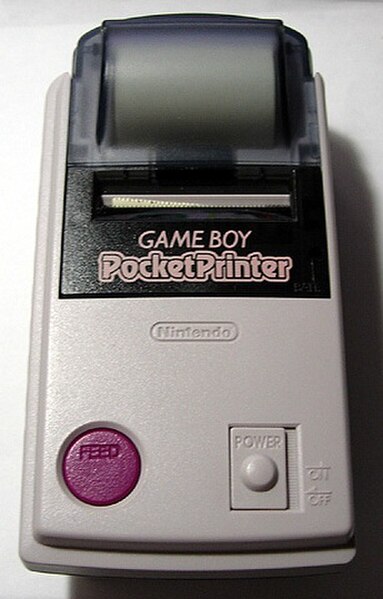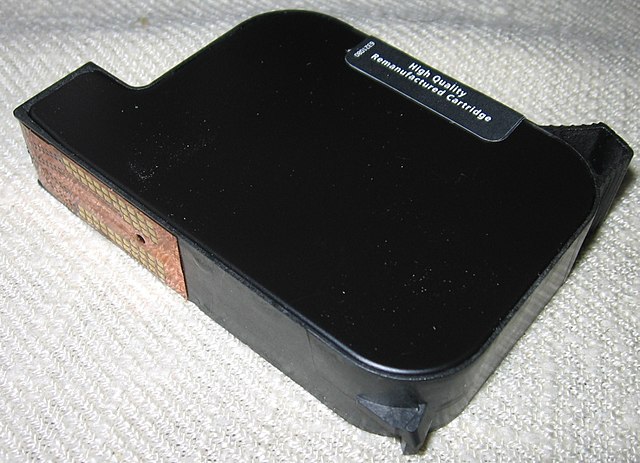A label printer is a computer printer that prints on self-adhesive label material and/or card-stock (tags). A label printer with built-in keyboard and display for stand-alone use is often called a label maker. Label printers are different from ordinary printers because they need to have special feed mechanisms to handle rolled stock, or tear sheet (fanfold) stock. Common connectivity for label printers include RS-232 serial, Universal Serial Bus (USB), parallel, Ethernet and various kinds of wireless. Label printers have a wide variety of applications, including supply chain management, retail price marking, packaging labels, blood and laboratory specimen marking, and fixed assets management.
Brother P-Touch 540 label printer
Control panel of a typical low-end label maker (circa 2005) showing the LCD display
Labels appear out the back. The device includes a cutting mechanism (purple button, back right) and backing stripper (back left)
Rear cover removed to show the mechanism including tape cartridge and feed path
In computing, a printer is a peripheral machine which makes a persistent representation of graphics or text, usually on paper. While most output is human-readable, bar code printers are an example of an expanded use for printers. Different types of printers include 3D printers, inkjet printers, laser printers, and thermal printers.
HP LaserJet 5 printer
The Game Boy Pocket Printer, a thermal printer released as a peripheral for the Nintendo Game Boy
This is an example of a wide-carriage dot matrix printer, designed for 14-inch (360 mm) wide paper, shown with 8.5-by-14-inch (220 mm × 360 mm) legal paper. Wide carriage printers were often used in the field of businesses, to print accounting records on 11-by-14-inch (280 mm × 360 mm) tractor-feed paper. They were also called "132-column printers".
Liquid ink cartridge from Hewlett-Packard HP 845C inkjet printer








